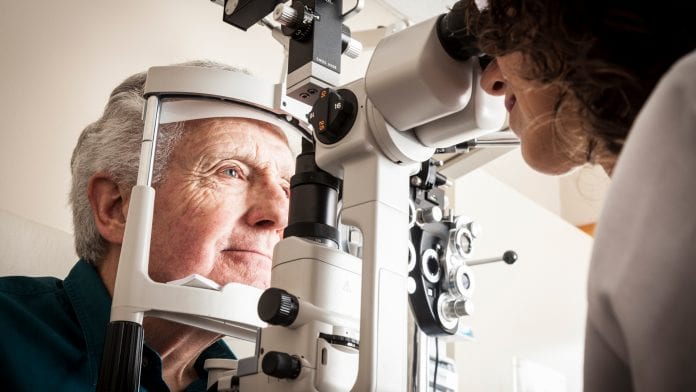
Scientists have made a breakthrough in determining the cause of the most common type of blindness in adults.
A team of researchers, led by the University of Manchester, have discovered that the most common form of adult blindness is most likely a result of at least one of five proteins that regulate the immune system.
The findings have been published in the American Journal of Human Genetics.
Researchers hope that the insights could eventually aid the development of new treatments for age-related macular degeneration (AMD) – a leading cause of sight loss that affects the middle part of the vision. The research could also inform the development of future tests to determine those patients most at risk of developing the condition.
Genes affecting risk of adult blindness
From past studies, it has long been established that inflammation at the back of the eye does play a role in the development of AMD. Previous studies have also identified a collection of genes thought to regulate the activity of the complement pathway – a crucial part of our immune defence against pathogens – that affect a person’s risk of developing the disease. Until now, however, the role of these genes – Complement Factor H (CFH) and Complement Factor H-Related 1 to 5 (CFHR-1 to CFHR-5) – has not been established.
To carry out the study, the team of researchers examined the levels of the products of these genes – FH and FHR-1 to FHR-5 proteins– in 604 blood plasma samples using a method called mass spectrometry. By doing so, the team was able to demonstrate for the first time that all five FHR proteins are at higher levels in people with AMD than in those without.
Part of the innate immune system, the complement pathway, is our first line of defence against infections and clears damaged cells by marking them for destruction and recruiting and activating other immune cells. In AMD, the complement pathway is over-activated in the back of the eye, promoting an inappropriate and damaging inflammatory response.
Measuring proteins
Dr Richard Unwin, from The University of Manchester’s Stoller Biomarker Discovery Centre, said: “This is a hugely important study for people with AMD. Measuring the levels of these FHR proteins has been a big challenge over the last few years and is technically quite challenging as they are present at low levels in the blood and are very similar to each other.
“By using state-of-the-art mass spectrometry methods, we can now confidently measure these proteins and show for the first time what is an important, if not the most important, factor in how AMD develops.
“This opens up whole new areas for improving patient care, through the development of new treatments targeted at these proteins or in simply monitoring levels to discover who has higher levels of complement activation and, as such, will benefit from complement-modifying treatments.
“It’s important to stress that studies over time need to be carried out before we can say with authority that these proteins are able to predict risk – and that will take time.
“We’re confident about our results: a second study by Dr Laura Lorés-Motta and Professor Anneke den Hollander at Radboud University in the Netherlands has in parallel arrived to the same conclusion about FHR proteins using a different measuring technique.”
Early intervention to stop AMD progression
In its early stages, AMD starts to damage the back of the eye, forming deposits after which then patients go on to develop two forms of the disease: wet or dry AMD. However, the team hope that intervening at an early stage could stop its progression.
Dr Valentina Cipriani, a lecturer in Statistical Genomics at Queen Mary University of London, who led the data analysis, said “For more than 15 years, the focus for AMD has been on Complement Factor H and its protein FH. Our analysis clearly points beyond FH.”
“By using an approach called a genome-wide association study that looks at genetic variants across the genomes of people with and without the disease, we were able to identify genetic variants that determine both higher FHR protein levels and increased risk of AMD.”
Prof Simon Clark, Helmut Ecker Endowed Professor of AMD at Eberhard Karls University of Tübingen who co-supervised the work said “This really marks a step-change in our understanding around the driving mechanisms behind specific types of AMD.
“It follows on from our original discovery last year around FHR-4, but while all higher levels of at least one of the five FHR proteins are now known to be associated with AMD risk, not all patients will have their disease driven by this route.
“Therefore, being able to measure these proteins in patients’ blood will be vital in identifying patients who will react to FHR-targeting therapies sometime in the future.”









